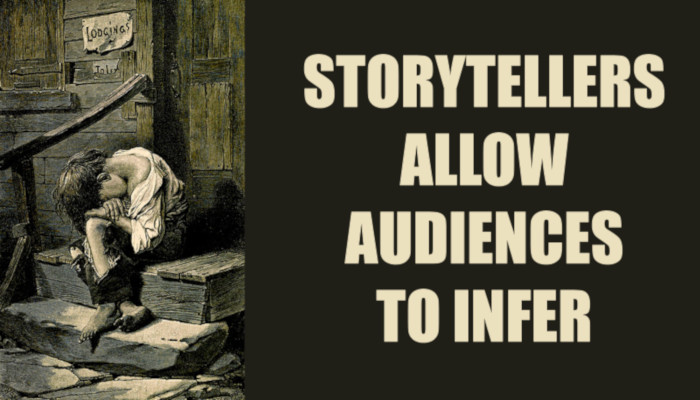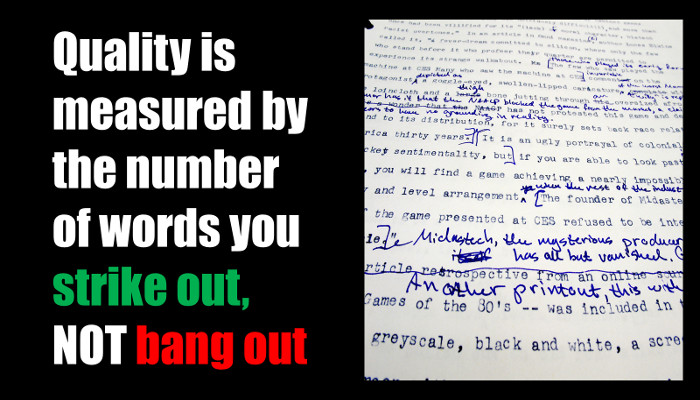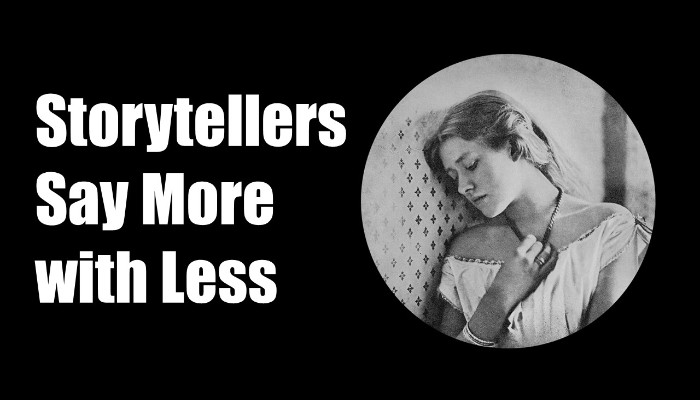When Storytellers Become Entrepreneurs: weshowup.io
Storytellers bring new perspectives to the great game of business. Kahlil Ashanti is changing the way tickets are priced with his company, weshowup.
Storytellers bring new perspectives to the great game of business. Kahlil Ashanti is changing the way tickets are priced with his company, weshowup.
In addition to teaching storytelling, Ron is a working storyteller. Here is a story that he published on his 14-year old podcast, Griddlecakes Radio. It’s a story called: Who Knew Storytelling Could be so Dangerous.

I’ve been reading about “deep learning,” the subset of artificial intelligence and machine learning that uses neural networks. The more I learn, the more I see a direct relationship between deep learning and storytelling.
Deep learning is split into two steps: training and inference. Have you ever wondered how Facebook knows that you’re in an untagged picture? Essentially, it has trained a neural network model to do so by showing it hundreds of pictures already tagged with your name. Over time, the model starts to “recognize” patterns in this training set. Finally, once the model has been trained to recognize you, Facebook shows it untagged pictures. If the model has been trained well enough, it can infer whether you’re in that untagged picture or not.
I’ve found that this learn-and-infer process also has deep roots in good storytelling.
The best storytellers base their work in inference. They’re masters at delivering just enough facts for us to infer the meaning of them.
For example, storytellers will show us:
Storytellers show us these things because of our innate abilities to infer meaning from them.
Great storytellers say more with less by allowing us to infer from what we already know. Bad storytellers spend too much time teaching us new things.
In other words, bad storytellers describe meaning explicitly. Great storytellers allow their audiences to infer it themselves.
Image Credit: Sperry, R. T., Artist. Homeless and friendless / R.T. Sperry. New York, 1891. Photograph. https://www.loc.gov/item/2012647169/.

I learned a valuable writing lesson from a movie scene of Ernest Hemingway staring at the blank page. A piece of cardboard with handwritten numbers leans against the wall behind his typewriter. After an awkward moment, Hemingway pencils a zero onto the cardboard. As the camera pulls away, we see that it’s the third consecutive day with a zero. One of the world’s greatest writers reminds us that writing is a marathon instead of a sprint.
But, that’s not what I’ve been seeing recently, as more and more social media posts describe how someone “banged out” ten-thousand words of their next book over the the course of a weekend. Most of these posts are subsequently rewarded with dozens of congratulations for the accomplishment. This may sound curmudgeonly, but what exactly did they accomplish? It’s like congratulating someone for completing a marathon without doing any training. While it’s possible to complete all 26 miles untrained, it’s impossible to do it well.
Banging out ten-thousand words is an accomplishment, it just isn’t the accomplishment. Every good writer knows that those first 10,000 words will contain something like 2,500 nuggets of gold hidden among 7,500 pieces of iron pyrite. And the only way to separate them? Through the hardest part of writing: editing. Magic happens in the editing.
I’ve been working on a manuscript for over a year. Last weekend, I wrote 5,000 words, yet the word count on Sunday evening was actually smaller than the word count on Saturday morning. If I only measured my writing productivity through word count, last weekend would have been considered an #EpicFail.
But, that’s not my goal. My readers don’t care about how many words I’ve “banged out.” They only care about the ones that survived many rounds of ruthless editing.
It’s not the amount of words you write. It’s about the amount of words you keep.
Photo Credit: mpclemens published the image, A lot of ink spilled, through CC BY 2.0.

Most novices think that story development starts by focusing on the big things like the plot, the struggle, and the final resolution. But, that’s not where the magic of storytelling resides. The best storytelling lives in the little details that hit audiences in the gut, thus making us feel a kinship with the characters.
![]()
The Amazon Original Series, Good Girls Revolt is a period piece that’s loosely modeled on the story of Newsweek Magazine in the 1960s. One of the characters, a caption-writer named Cindy, is in a loveless marriage. One day, she has an encounter with co-worker, Ned, a photographer who has asked her to sit in a portrait chair so he can check his lighting.
At first, Cindy seems a little self-conscious as the sole focus of Ned’s attention. But when he reaches over after a series of test shots and adjusts the way her necklace dangles, her self-consciousness transforms into a moment where she looks at him dreamy-eyed.
Later that evening, Cindy and her self-absorbed husband are each reading in bed. He glances at her lustfully, closes his book, and attempts to initiate some…well…you know. But rather than reciprocating, Cindy rebuffs him. As he turns away, angry and frustrated, the camera draws our attention to her fingertips that are fondling her necklace. The scene fades out with her wearing the same dreamy smile that we saw earlier.
That’s great storytelling, folks. The writers have made brilliant choices about facts and the order they’re revealed. The scene with photographer Ned was used to set up a powerful moment where we KNOW what Cindy’s thinking…AND IT DIDN’T EVEN REQUIRE WORDS.
Symbolism (StoryHow PitchDeck Card #57) is an advanced technique that storytellers use to convey a deeper meaning. Symbols come in many forms such as graphics, props, or in this case, necklaces. Based on what an audience knows about a symbol’s significance, these devices can tell entire stories on their own. By establishing Cindy’s necklace as a symbol that represents a man’s caring touch, Good Girl Revolt’s writers have transformed a simple piece of costume jewelry into a powerful tool that connects the audience with the character.
So, stop worrying about the big pieces and start focusing on the little ones. Perhaps you can use a symbol in the next piece that you write?
Photo Credit: Cameron, Julia Margaret, photographer. Ellen Terry, at the age of sixteen / Julia Margaret Cameron., 1913. Photograph. Retrieved from the Library of Congress, https://www.loc.gov/item/89708624/
| A StoryHow Puzzle: The 1913 photograph used in this post is of Miss Ellen Terry. I chose the photo because she’s holding onto a necklace, however I then stumbled upon a connection between it and the 1981 movie, Arthur, starring Dudley Moore and Liza Minelli. Can you find the connection? I’ll post the answer in next week’s Dragonslayer Digest. You are subscribed, aren’t you? |